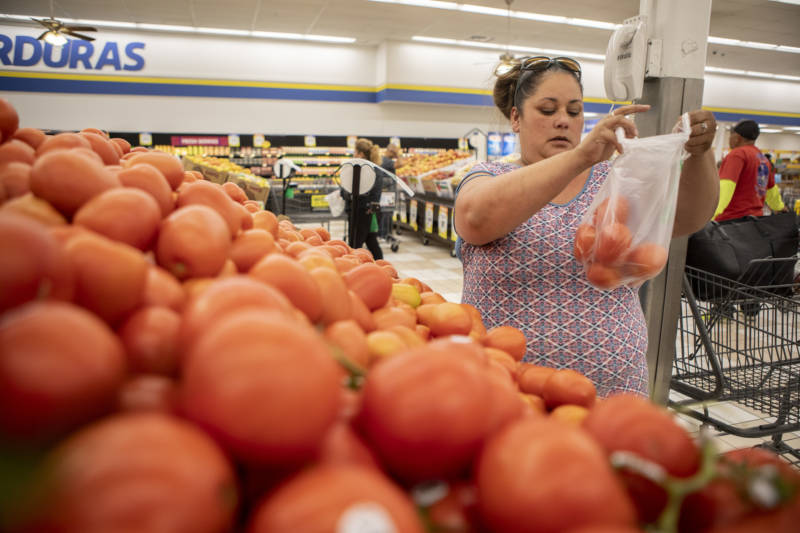“Either we face those families losing that benefit or us having to compensate for it in the budget,” she said. “And we’re in a situation with the [state budget] shortfall this year.”
State lawmakers only have until June 15 to adopt a budget for the coming year. But Skinner said talks are underway to explore solutions. She’s more confident the state can mitigate new restrictions proposed for the food stamp program, noting the Senate budget plan (PDF) included calls to expand benefits.
“While it’s not a done deal, I have more confidence that California will be able to address that part,” she said.
The deal brokered between President Joe Biden and House Speaker Kevin McCarthy would expand work requirements for the Supplemental Nutrition Assistance Program, formerly known as food stamps and dubbed CalFresh in California.
How eligibility would change under debt ceiling deal
Work requirements are already in place for most nondisabled adults up to 49, limiting their access to food stamps to three months out of every three years unless they can show they’re working 20 hours a week or meet other criteria. The compromise plan would gradually raise the maximum age to 54 by 2025 and make it more difficult for states to waive work requirements for some people.
In a win for Democrats, the bill would also expand some benefits for veterans, unhoused people and former foster youth through age 24. The upshot, according to initial projections, is that numbers will stay roughly stable.
“There will be about as many people newly protected as newly subject to time limits because of the age change,” National Economic Council Deputy Director Aviva Aron-Dine said at a press briefing on the agreement.
All changes to the SNAP program would expire in 2030.
The deal would also tighten work requirements for the Temporary Assistance for Needy Families program — CalWORKs in California — which provides cash aid to families with children, by making it harder for states to exempt families from the requirements. .
As of this month, about 3 million California households receive CalFresh benefits. According to the Legislative Analyst’s Office, the projected number of cases with CalWORKs for 2023 increased by 44,435, bringing the total to 398,409.
Food stamp benefits expanded during the pandemic. When that ended this March, Californians saw their allotments drop by about $84 a month per person, according to the Center on Budget and Policy Priorities.
“We have just gone over the largest hunger cliff in history,” said Andrew Cheyne, managing director of public policy for the nonprofit GRACE End Child Poverty California.
He said now is not the time to further limit access to help.
“The data show that taking food assistance away is not helping someone find a job. It is simply taking away their ability to buy groceries and to prevent hunger,” he said. “How does putting hunger on someone’s résumé support them?”
Meanwhile, food banks are reporting surging demand. The Alameda County Community Food Bank (ACCFB) has seen calls to its emergency food helpline double since the emergency allotment expired, said Michael Altfest, the food bank’s director of community engagement
“We’ve had a lot of households reaching out over the last couple of months, very confused and often angry about what’s been happening,” he said.
In Alameda County, the recent reduction in food stamp benefits means that families are forgoing about 3.1 million meals per month, according to an analysis by ACCFB staff. The food bank, by comparison, distributes between 4 million and 5 million meals per month, Altfest said: “That’s a number that our foodbank simply cannot make up for.”
Even if the proposed SNAP limits and expansions result in a wash, Altfest said changes can sow chaos.

